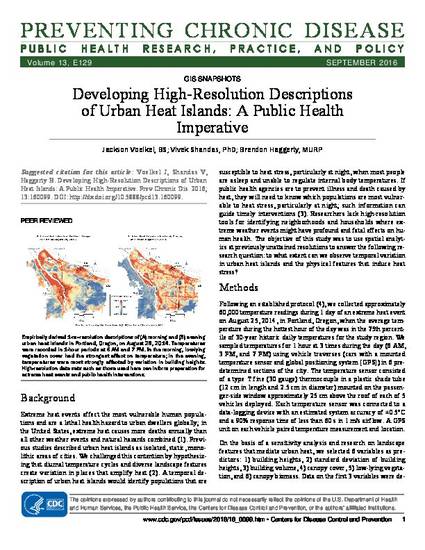
- Urban heat island,
- Urban climatology,
- Sustainable development
Extreme heat events affect the most vulnerable human populations and are a lethal health hazard to urban dwellers globally; in the United States, extreme heat causes more deaths annually than all other weather events and natural hazards combined (1). Previous studies described urban heat islands as isolated, static, monolithic areas of cities. We challenged this contention by hypothesizing that diurnal temperature cycles and diverse landscape features create variation in places that amplify heat (2). A temporal description of urban heat islands would identify populations that are susceptible to heat stress, particularly at night, when most people are asleep and unable to regulate internal body temperatures. If public health agencies are to prevent illness and death caused by heat, they will need to know which populations are most vulnerable to heat stress, particularly at night; such information can guide timely interventions (3). Researchers lack high-resolution tools for identifying neighborhoods and households where extreme weather events might have profound and fatal effects on human health. The objective of this study was to use spatial analytics at previously unattained resolutions to answer the following research question: to what extent can we observe temporal variation in urban heat islands and the physical features that induce heat stress?

The article can be found online at: http://dx.doi.org/10.5888/pcd13.160099